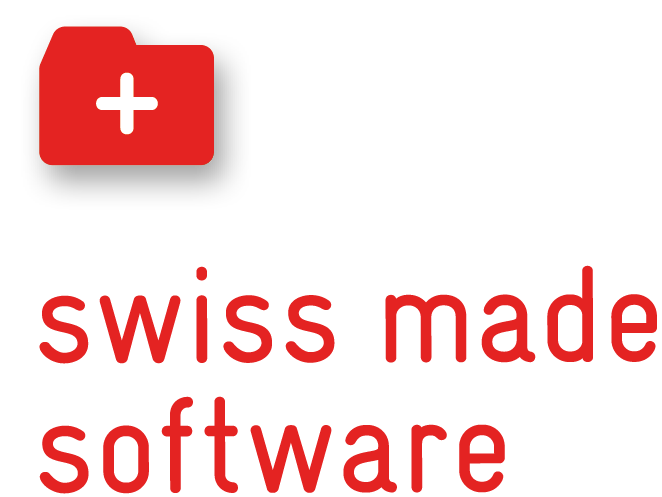There’s a renaissance in alternative lending. After nearly a decade of cheap debt, peaking with the pandemic’s rock-bottom interest rates, commercial lenders are feeling the heat.
Increasingly skeptical of new credit applications, whether a commercial or car loan or something in between, legacy lenders are spooked – with potential borrowers left in the lurch.
The private credit ecosystem fills the legacy lending gap by extending credit to those the banks won't. Furthermore, alternative lending is among the few investments generating stable and predictable yields beyond traditional fixed-income markets. As we're all too familiar, reliable yield is especially critical today as inflation eats away at cash reserves and market valuations remain high while many predict that the bottom isn't yet in for the stock market.
The burgeoning private credit market attracts high net-worth individuals, retail, and institutional investors alike; a recent BlackRock report showed the total private debt market valuation swelling to more than USD 1.35T, with alternative and direct lending nearly 50% of the total.
Many potential investors, and even hopeful borrowers, don’t understand or recognize the full scope of these lending markets. Far from being an inevitable “default waiting to happen,” there is an alternative lending opportunity for each risk profile that has a place in almost any investment strategy.
But we must first understand the alternative lending landscape.

What is alternative lending?
Alternative lending broadly describes a variety of platforms that aggregate individual and institutional capital to extend loans to individuals, businesses, and real estate ventures at rates and terms preferable (for the borrower) to massive APRs associated with the most accessible debt like revolving credit (credit cards and similar).
Likewise, the creditors and investors underwriting the loans often see greater yields than public and corporate bonds with comparable maturities.
In the recent past, alternative lending was primarily a series of individual investors pooling their cash to extend unsecured loans. Today, as the asset’s popularity spikes, comprehensive platforms act as one-stop shops for riskier borrowers and debt investors.
The market isn’t full of shady loan sharks, either. Aside from the many professional mid-market platforms managing credit directly, institutional investors and banks rely on the platforms to run due diligence on borrowers and mitigate risk on loans they’d otherwise deny or view as too small for consideration.
What loans are available in alternative lending?
In short, nearly every loan imaginable is available within the alternative lending ecosystem. If there’s a borrower in need, there’s inevitably a private creditor willing to step up if the terms are attractive enough. Still, some loans are commonly seen within the space:
- Consumer loans
- Micro, small, and medium enterprise loans (MSMEs)
- Agricultural loans
- Invoice factoring
- Buy now Pay Later (BNPL)
- Mortgage and Real Estate
- Bridge loans
- Alternative lending platforms
- Balance sheet lending
- Direct credit
- Funds
- Bonds and Notes
Consumer loans
A consumer loan is any debt extended to an individual, whether secured or unsecured. Largely discretionary, consumer loans might fund home repairs, consolidate or refinance existing debt, or even pay for a vacation. Consumer loans do not include mortgages or small-business loans. As online fintech platforms expand services and offerings, more offer consumer loans to those with riskier credit profiles than banks prefer.
Micro, small, and medium enterprise loans (MSMEs)
MSMEs technically describe any small business or private venture, but the term often applies to tiny operations in emerging markets. Emerging market entrepreneurs form the backbone of many local and regional economies but need help finding financing due to a lack of credit history, insufficient collateral assets, or limited access to reputable institutions.
MSMEs are increasingly popular investment options for retail and individual investors, as the capital required to invest is often tiny and positively impacts global neighbours in need.
Agricultural loans
Newer or small agricultural ventures often struggle with traditional lending as banking underwriting processes tend to be strict on credit assessment and collateral. However, those eligible usually enjoy relatively low rates and long repayment periods.
Alternative lending steps in for those family farms or future enterprise producers by lending capital to grow their operation (pun intended). Platforms targeting agricultural lending are increasingly popular, and many local options exist that pool community cash to allow neighbours to succeed.
Invoice Factoring
Many small and new businesses struggle with invoice timelines impacting their cash flow. Smaller and thus unable to negotiate the best invoice payment timelines, many owners cannot wait 30 – 90 days to get the cash for services rendered or products sold.
Alternative lending covers the difference and “buys out” invoices and accounts receivable at a slight discount. In exchange for the fee, business owners get their cash faster for payroll, new inventory, and other daily demands.
There’s even a growing market related to invoice factoring that targets affiliate marketers and digital influencers who endorse products in exchange for percentage-based commissions. Since many retailers in the affiliate marketing space have strict rules to prevent returns post-payment, the lead time on payouts trends toward the longer end of the timeline. Alternative lenders are increasingly stepping in to buy that cash flow today at 80%, for example, so the marketer isn’t waiting three or more months for their cut.
Buy Now, Pay Later (BNPL)
BNPL describes a basic payment plan for (mainly) online purchases and splits the cost over several equal, recurring payment periods. BNPL exploded over recent years alongside online shopping trends, and platforms like Affirm almost exclusively operate in the BNPL space.
BNPL options are great for those with lower credit scores. The short-term loan doesn’t usually demand a credit check and even offers zero-interest financing if the repayment is within a relatively brief window, like four weeks.
BNPL loans are like consumer loans but differ in application requirements, and the total amount lent as BNPL financing amounts is often much smaller.
Mortgage and real estate
The largest dollar-weighted sector within alternative lending, mortgage and real estate private credit ranges from individual financing, like you’d see in a standard mortgage, to short-term loans targeting flippers who buy and repair distressed assets.
Real estate alternative lending also comprises many institutional funds centered around new build construction, commercial leasing, and multi-family home management.
Although institutions and big-name funds dominate the space, micro-lending platforms also open investment opportunities to individual and retail investors willing to extend a portion of the total loan in exchange for (often) substantial yield depending on the credit risk.
Bridge loans
Bridge loans cover, or bridge, a period demanding quick funding. Since traditional lending often takes time to assess and disburse funds, alternative lending bridges the gap with bridge loans in circumstances like, for example, a quick cash infusion for a family moving cross-country before starting a new job and kickstarting cash flow.

Alternative lending platforms
Like loan variety, numerous alternative lending platforms serve any investment style or borrower need. Still, many follow the same basic structure with modifications based on size, client type, industry, or loan type.
Traditional lending, relying on savings deposits and internal debt/equity, demands much of its applicants, including employment status, credit history, need and purpose of the loan, and more. If and when the borrower gets formal financing approval, they borrow directly from the bank or institution that acts as both the lender and originator.
In comparison, alternatives quickly assess risk and determine lending opportunities (total and terms) through largely digitized processes. Once complete, the platform provides the capital directly to the borrower, but that capital is usually an aggregate of cash from multiple investors, whether individual, institutional, or a blend.
Origination varies between platforms and loan types:
- Some lending, like BNPL, is point-of-sale based, and the lending platform originates the loan quickly to complete the purchase.
- Other platforms, especially consumer lending, work directly with traditional banking institutions to exploit their legal and technical infrastructure. The same banking institutions usually have a stake in the loans themselves, so they’re particularly motivated to ensure compliance.
Rather than waiting on interest and repayment cash flow, lending platforms sometimes refinance the loans. In other cases, especially in peer-to-peer lending with many investors, they repackage the entirety and assume the debt themselves.
Balance sheet lending
Rather than only facilitating the loan through origination and servicing, balance sheet lending is a method of loan aggregation in which the platform buys out individual investors for a discount, then assumes responsibility for the entirety of the loan on their balance sheet.
Some platforms exclusively operate via balance sheet lending, particularly those servicing small amounts like BNPL platforms.

Direct credit
Other platforms, especially those working in secured debt spaces, maintain a direct credit line with a large institution. Charging their borrowers higher rates than they pay on credit, the bank acts as the loan servicer and assumes the additional risk in exchange for the difference in interest and other fees.
Funds
Large alternative lenders, especially in real estate markets, package all loans into a single fund – much like those you see on the stock market. Comprised of a basket of loans arranged by risk, type, and similar characteristics, investors buy shares of the fund to fuel lending opportunities.
Like a typical ETF or mutual fund, investors’ shares get dividends (via interest) and capital appreciation (asset value increases) in return.
Bonds and Notes
Like funds, bonds and notes serve as a means by which alternative lending platforms package their debt for third-party investment. They act like standard fixed-income products, i.e., government and corporate bonds, and serve as a slice of the overall debt with coupon payments and principal repayment at maturity.
Lenders use bonds and notes to offload risk, as credit risk migrates to the bondholder once bought and generates cash flow immediately rather than waiting for lengthy repayment scheduling.


